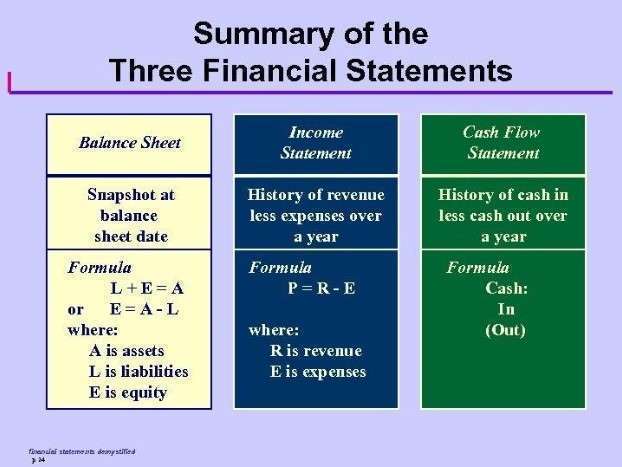What are Long-Term Assets? Definition Meaning Example
Marketable securities can be most investments, including stocks, bonds, and exchange-traded funds (ETFs). Marketable securities are considered current assets and are expected to be sold in less than a year, usually a few months. These types of securities are typically liquid securities that can be sold easily as there is a large number inventoriable costs of buyers. The two main types of assets appearing on the balance sheet are current and non-current assets.
Long-term assets can be contrasted with current assets, which can be conveniently sold, consumed, used, or exhausted through standard business operations with one year. These investments are classified as “available for sale” if the anticipated sale date is not within the next 12 months. Available-for-sale long-term investments are recorded at cost when purchased and subsequently adjusted to reflect their fair values at the end of the reporting period. Unrealized holding gains or losses are kept as “other comprehensive income” until the long-term investment has been sold. Capital assets, such as plant, and equipment (PP&E), are included in long-term assets, except for the portion designated to be depreciated (expensed) in the current year.
LT Assets Impact on Business Quality
If a company is investing in its long-term growth, it will use revenues to make more asset purchases designed to drive earnings in the long-run. One example of a long-term investment on a company’s balance sheet is real estate. Companies may invest in land or buildings with the intention of holding these assets for several years to appreciate in value.
Relationship with Other Financial Statements
This investment can provide rental income and potential capital gains, contributing positively to the company’s financial health. The one year cutoff is usually the standard definition for Long-Term Assets. That’s because most companies have an operating cycle shorter than a year. An operating cycle is the average period of time penalties for amending taxes and owing it takes for the company to produce the goods, sell them, and receive cash from customers.
We and our partners process data to provide:
Individuals that buy a house usually sell it many years after they have bought it or they own it until the mortgage is fully paid off. A day trader, for example, would define “long term” much differently than a buy-and-hold investor. For the day trader, a position held overnight would be a long-term commitment. For the buy-and-hold investor, anything less than several years may be considered short-term.
Generally speaking, most companies have an operating cycle shorter than a year. Therefore, most companies use one year as the threshold for Current vs. Non-Current Assets. Using both a long-term outlook and the power of compounding, individual investors can use the years they have between themselves and retirement to take prudent risks. When your time horizon is measured in decades, market downturns and other risks can be taken for the long-term rewards of a higher overall return. Yes, while they boost financial health, they can reduce immediate liquidity since they are not easily convertible to cash. It’s important to note that not all companies will have all the above assets.
In periods of a volatile interest rate environment, long-term investments on a firm’s balance sheet typically reflect the broader economic environment. However, long-term investments do not account for the company’s intrinsic value. Depreciation is an accounting convention that allows companies to expense a portion of long-term operating assets used in the current year. It is a non-cash expense that increases net income but also helps to match revenues with expenses in the period in which they are incurred. Long-term investments may be written down to properly reflect an impaired value. However, there may not be any adjustment for temporary market fluctuations.
- Long-term assets can be expensive and require large amounts of capital that can drain a company’s cash or increase its debt.
- Yes, while they boost financial health, they can reduce immediate liquidity since they are not easily convertible to cash.
- It is a non-cash expense that increases net income but also helps to match revenues with expenses in the period in which they are incurred.
- An operating cycle is the average period of time it takes for the company to produce the goods, sell them, and receive cash from customers.
- ABC is an insurance company that holds bonds and common stocks of different companies.
Current assets on the balance sheet contain all of the assets and holdings that are likely to be converted into cash within one year. Companies rely on their current assets to fund ongoing operations and pay current expenses such as accounts payable. Current assets will include items such as cash, inventories, and accounts receivables.
Understanding Long-Term assets
An individual can buy a stock and sell it if it appreciates in a few weeks or months. Conversely, the same stock can be held for years and sold until it has appreciated even more. Long-term assets can be expensive and require large amounts of capital that can drain a company’s cash or increase its debt. A limitation with analyzing a company’s long-term assets is that investors often will not see their benefits for a long time, perhaps years to come. Investors are left to trust the management team’s ability to map out the future of the company and allocate capital effectively. Investments held for resale within a year to get a short-term profit are classified as current investments.
A long-term investment is an account on the asset side of a company’s balance sheet for the company’s stocks, bonds, real estate, cash, and so forth. Long-term investments are those a company intends to hold for more than a year. A long-term asset is an asset that is not expected to be converted to cash or be consumed within one year of the date shown in the heading of the balance sheet. Hence, long-term assets are also known as noncurrent assets or long-lived assets. Long-term assets are reported on the balance sheet and are usually recorded at the price at which they were purchased, and so do not always reflect the current value of the asset.
If, however, the company sells the bonds the next twelve months, the bonds will be reported as short-term marketable securities. Short-term investments are marked to market, and any declines in value are recognized as a loss. Changes observed in long-term assets on a companies balance sheet can be a sign of capital investment or liquidation.
Below is a portion of Exxon Mobil Corporation’s (XOM) balance sheet as of September 30, 2018. Notice that whereas Current Assets is explicitly labeled and has its own subtotal, Non-Current Assets aren’t specifically labeled as such. Instead, companies just list Non-Current Assets underneath the Current Assets section.







